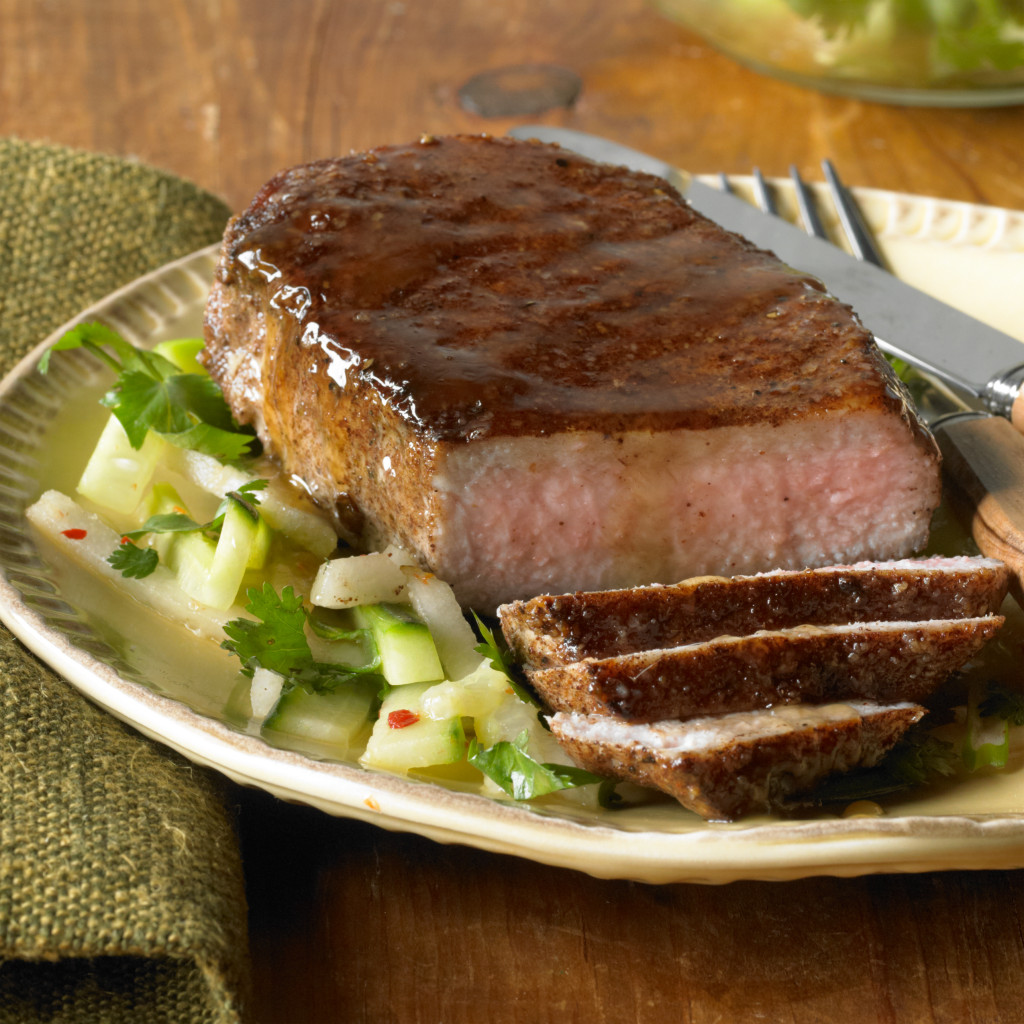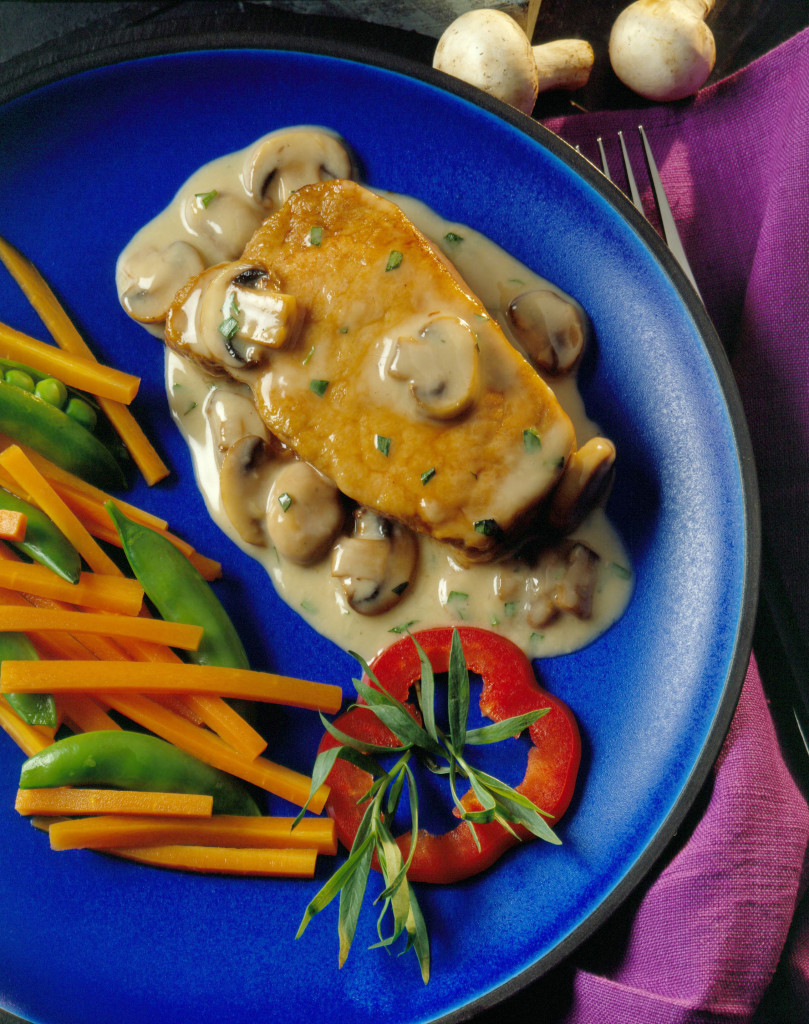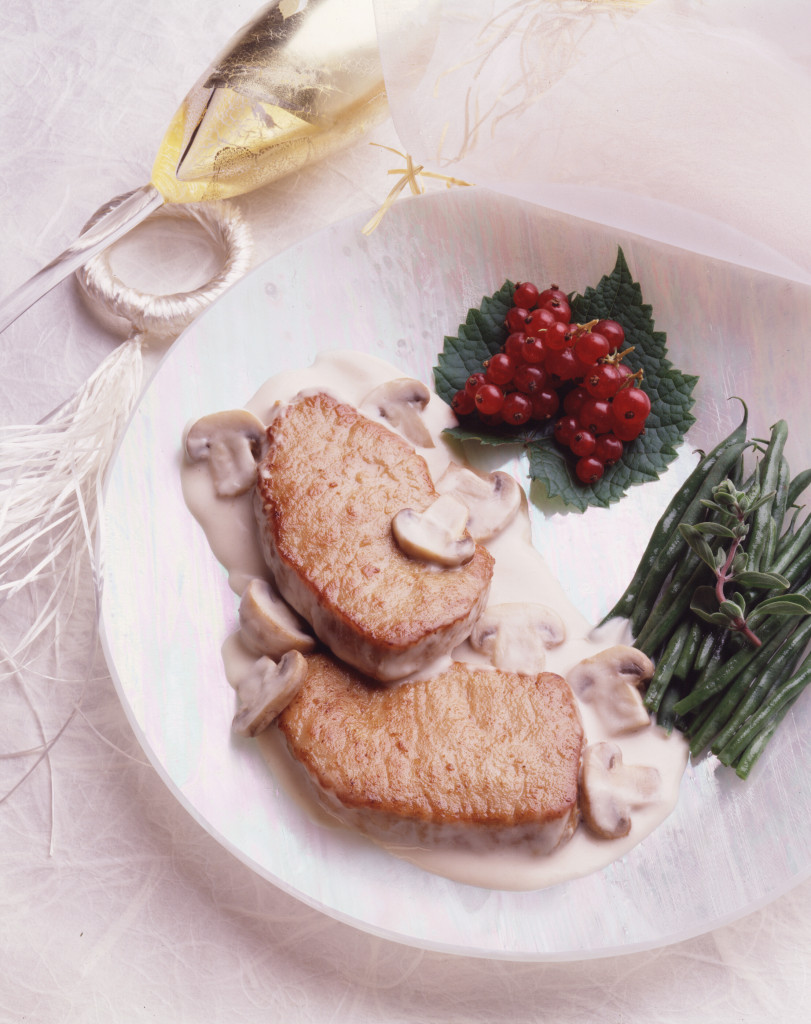The Lobel family of Lobel’s Prime Meats in Manhattan and Lobel’s of New York online butcher shop are fourth- and fifth-generation butchers. With our Cut of the Month series, we will bring you their wealth of knowledge and expertise on specific cuts of meat, including their unique characteristics, preparation methods, and how to select the best cut.
Pork is a sweet, tender meat that has been eaten for more than 9,000 years. Hogs were domesticated long before sheep, goats, or cattle and so it is no small wonder that pork figures so prominently in most of the world’s great cuisines. In this country, we eat pork chops and pork tenderloin in larger quantities than other cuts of pork from the butcher shop.
This month’s Cut of the Month is a specific type of one of those American favorites: the boneless loin chop.
 Photo courtesy of National Pork Board. For more information about pork, visit PorkBeInspired.com.
Photo courtesy of National Pork Board. For more information about pork, visit PorkBeInspired.com.The Pork of Yesteryear
Pork is not graded as “prime” or “choice,” as are beef and lamb, but instead as No. 1, No. 2, or No. 3. The No. 1 grade, which is the grade of pork sold in retail markets, is the best. In the old days, the season for pork was late fall, when hogs were butchered during the first cold snap.
Today’s pork is good at any time but the best pork is available from May through October when the animals are most apt to have access to the most varied diet.
Commercial pork is bred so that it is lower in fat than in previous days, and according to the industry, is 31 lower in fat and cholesterol than it was 20 years ago. It is also very safe and does not need to be cooked until gray and overdone, as was the case several generations ago. It is at its best when cooked to a medium doneness.
Its internal temperature should be 160°F, the temperature recommended by the U.S. Department of Agriculture. Use an instant-read meat thermometer to judge doneness. Because pork is so safe, some chefs cook it to slightly lower temperatures. Follow the recommendations in individual recipes when it comes to internal temperatures.
 Photo courtesy of National Pork Board. For more information about pork, visit PorkBeInspired.com.
Photo courtesy of National Pork Board. For more information about pork, visit PorkBeInspired.com.Selecting Pork Chops
Look for pork chops with pinkish-gray, finely textured lean meat with streaks of firm, creamy white fat. Any exterior fat should not be thick, but what there is should e a creamy white. Avoid deep red meat with a coarse texture and yellowing or bright white fat.
If your butcher, supermarket, or gourmet shop carries heirloom or specialty pork chops, try them. Take our word for it–you will have a hard time going back to run-of-the-mill pork!
The flavor of heirloom pork is so satisfying that you will immediately understand why, in days gone by, the pork raised right there on the farm was so cherished and why the pigs were so carefully tended and well fed.
At Lobel’s Prime Meats, our Manhattan butcher shop, we sell meat from pure- and cross-bred Tamworths, Gloustershire Old Spots, and Large Black hogs, pasture-raised for us in Vermont, where they are fed a diet free of antibiotics and growth hormones. The result? Flavor so deep and rich it echoes the pork from that bygone era. The meat is gloriously juicy and tender–just the way pork should taste.
A Lobel’s of New York online butcher shop, we offer Berkshire Pork. Known as Kurobuta Pork in Japan and Berkshire Pork elsewhere, this pork looks and tastes like no other pork. Unlike commercial pork, Berkshire pork is visibly different in two important ways: The color is darker and richer and the meat is well-marbled, a unique characteristic. Berkshire pork offers a unique taste experience, as well. Its texture is exquisite—supple, yet meaty. Its flavor is lush, distinctive and abundant. And the marbling yields unparalleled juiciness for pork—the meat glistens when you cut into it.
 Photo courtesy of National Pork Board. For more information about pork, visit PorkBeInspired.com.
Photo courtesy of National Pork Board. For more information about pork, visit PorkBeInspired.com.About Boneless Pork Loin Chops
The center section of a hog is divided lengthwise into two sections that are completely different in character and use. The top section is the loin, which is full of tender, juicy, lean meat, usually sold as fresh pork for roasts and chops. Boneless loin chops are cut from the front of the center loin.
(As for the meat in the section below the loin—that’s the belly. It’s interspersed with fat and bones and very often cured and smoked. It’s all good: the fat is bacon and the bones are ribs!)
 Photo courtesy of National Pork Board. For more information about pork, visit PorkBeInspired.com.
Photo courtesy of National Pork Board. For more information about pork, visit PorkBeInspired.com.Preparing Boneless Pork Loin Chops
Whether you choose to grill, pan-roast, or broil, these meaty chops deliver abundant pork flavor and cook in a jiffy.
Boneless pork loin chops can be used in pretty much any recipe that calls for pork chops. And being boneless, they have the added versatility of easy slicing on the plate.
Try boneless pork loin chops in any of these recipes:
Southwestern-Style Pork Chops with Ancho Chili Powder
(Grilling)
Servings: 4
Pork Chops in Red Wine
(Pan Searing / Pan Roasting)
Servings: 4
Pork Chops with Apple Brandy
(Pan Searing / Pan Roasting)
Servings: 6
Have you had boneless pork loin chops? What’s your favorite way to prepare pork chops? What’s your favorite cut of pork or favorite pork dish?



Leave Your Response